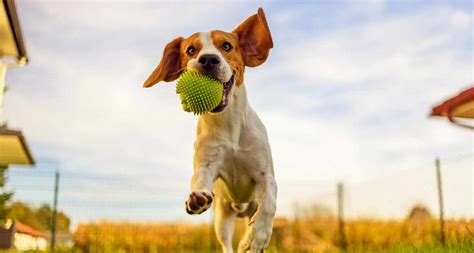Introduction
In the rapidly evolving world of pet care, ensuring the well-being of our furry companions has become a top priority. Exercise and fitness play a pivotal role in enhancing their physical and mental health, significantly impacting their overall quality of life. This comprehensive guide will delve into the essential aspects of pet exercise and fitness routines, empowering pet owners with the knowledge and tools to keep their pets fit and healthy.

Benefits of Pet Exercise and Fitness
Numerous studies have highlighted the profound benefits of regular exercise and fitness for pets. These include:
- Improved cardiovascular health: Exercise strengthens the heart and lungs, reducing the risk of cardiovascular diseases.
- Weight management: Exercise helps pets maintain a healthy weight, preventing obesity and its associated health problems.
- Reduced stress and anxiety: Physical activity releases endorphins, which have mood-boosting effects, reducing stress and anxiety levels.
- Enhanced cognitive function: Exercise stimulates the brain and improves cognitive abilities, such as problem-solving and learning.
- Stronger bones and joints: Exercise strengthens bones and joints, reducing the risk of injuries and arthritis.
- Improved sleep quality: Physical activity promotes restful sleep, leading to better overall well-being.
Common Exercise and Fitness Regimens for Pets
The optimal exercise regimen for a pet depends on its age, breed, and health status. Here are some common exercise routines:
| Activity | Benefits | Frequency |
|---|---|---|
| Walking: | Improves cardio, reduces weight, builds stamina | Daily |
| Running: | Excellent cardio workout, strengthens bones | 2-3 times per week |
| Swimming: | Low-impact exercise, great for rehabilitation | 1-2 times per week |
| Fetch: | Enhances coordination, provides mental stimulation | Daily |
| Tug-of-war: | Strengthens teeth and jaws, provides bonding | 1-2 times per week |
It is recommended to gradually increase the intensity and duration of exercise over time to prevent injuries.
Fitness Considerations for Specific Pets
Dogs:
Dogs are naturally active and require regular exercise. Different breeds have different exercise needs, ranging from low-energy breeds like Bulldogs to active breeds like Huskies.
Cats:
Cats are often perceived as low-maintenance pets, but they also need exercise to stay healthy. Interactive toys, scratching posts, and vertical structures encourage cats to play and stay active.
Rabbits:
Rabbits require ample space to hop, run, and jump. Providing them with a large enclosure or allowing supervised playtime in a room is essential for their well-being.
Common Mistakes to Avoid
- Overexertion: Pushing pets too hard can lead to injuries. Start slowly and gradually increase intensity.
- Improper surfaces: Avoid exercising pets on hard or slippery surfaces that can cause joint pain.
- Extreme weather: Avoid exercising pets in extreme heat or cold. Choose shady areas or indoor options during these times.
- Unsupervised play: Keep pets supervised during play to prevent accidents.
- Ignoring health issues: If pets have any underlying health conditions, consult a veterinarian before starting an exercise regimen.
Why Pet Exercise and Fitness Matters
Regular exercise and fitness can significantly extend the lifespan and improve the quality of life of pets. It reduces the risk of chronic diseases, promotes physical and mental well-being, and strengthens the bond between pet owners and their furry companions.
Case Details: The Benefits of Exercise for Obese Pets
Studies have shown that obese pets who engage in regular exercise experience significant weight loss, reduced inflammation, and improved insulin sensitivity. Exercise not only helps them shed extra pounds but also improves their overall health and mobility.
Highlights: The Importance of Pet Exercise in Preventing Arthritis
Arthritis is a common condition in older pets that can significantly impact their mobility and quality of life. Regular exercise helps strengthen bones and joints, reduces inflammation, and improves flexibility, effectively preventing or mitigating arthritis.
Conclusion
Ensuring the health and well-being of our pets is a responsibility that every pet owner should take seriously. Regular exercise and fitness are indispensable components of a comprehensive pet care routine. By following the expert guidance outlined in this guide, pet owners can create customized fitness regimens that meet the unique needs of their furry friends. Remember, a healthy pet is a happy pet, and a happy pet is a cherished companion.





















